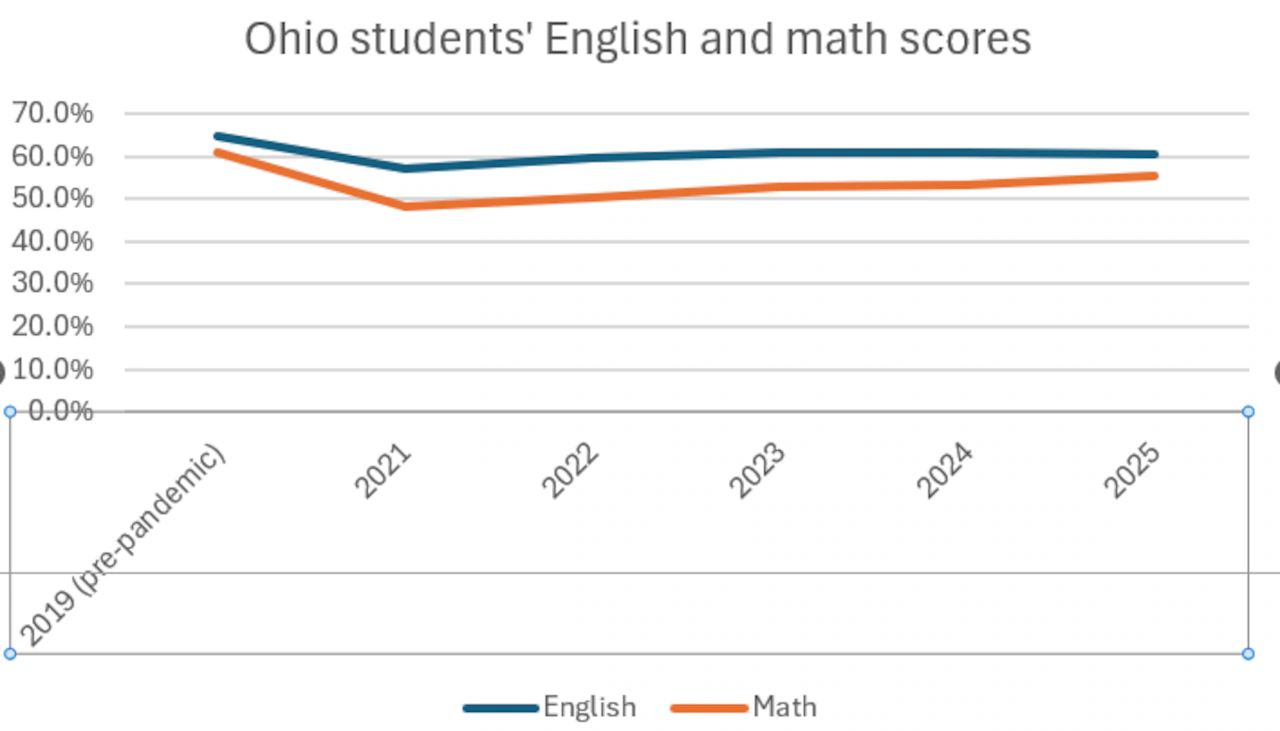
COLUMBUS, Ohio -Six years after the beginning of the COVID-19 outbreak, Ohio students’ proficiency scores in math are crawling back to pre-pandemic levels, according to state data from the recently released district and school report cards.
In English language arts, however, proficiency slightly decreased from last year.
The Ohio Department of Education and Workforce on Monday released report cards based on Ohio’s State Tests, which students took last spring. The report cards only looked at traditional public school students and charter school students, but not private or home schools.
For math proficiency, 55.3% of students in all grades were proficient in math. This is down from the 61% proficiency rate in 2019, before the pandemic started, but above last year’s 53.5%.
For English language arts across all grades, 60.4% of students were proficient on the report cards released Monday. This is a half percentage point lower than last year, when it was 60.9%. In 2019, 64.6% of students were proficient.
“We are not back to pre-pandemic in math, no,” said Chris Woolard, the chief integration officer at the Ohio Department of Education and Workforce. “But you know, even in 2021, the first year we had good data after the pandemic, we were at 48%. So we are kind of moving upwards from where we were. But again, it’s not where we want to be.”
2025 School Report Cards
Ranking all 607 Ohio public school districts by their 2025 report card test scores
Early into ‘science of reading’ transition, how are Ohio schools adapting?
Wealthiest districts score best in 2025 Ohio school report cards; see the trend
See building-by-building 2025 Ohio school report cards
Cleveland schools drop to 2.5 stars in 2025 state report card
Research connects reading outcomes to math outcomes, as math requires reading, he said.
“As the work on literacy continues to take hold, there’ll be some corresponding improvements,” he said.
Public and charter schools across the state have begun transitioning to the “science of reading,” an instructional approach that emphasizes phonics and vocabulary over a previous approach known as “three-cueing,” “whole language” or “balanced literacy,” in which students learn to read from visual cues and a text’s meaning.
By the end of the last school year, which was June, schools were prohibited from using core curriculum, instructional materials and intervention programs that aligned with the “three-cueing” approach in prekindergarten through grade 5. Teachers of all grade levels and subjects were required to take professional development on the science of reading last year, too.
The increase in the math proficiency rate is one of the best stories from Monday’s report cards, said Aaron Churchill, Ohio research director for the Thomas B. Fordham Institute, an education think tank and charter school sponsor.
He said the dip in English this year is a bit of a puzzle.
“Year to year, you can see some ups and downs,” he said. “One year doesn’t make a long-term trend. Reading generally did not fall as much during the pandemic. We have seen more robust recovery in math. But that’s against a larger dip that we had in the pandemic.”
Perhaps teachers and schools are getting used to new science-of-reading curriculum and pacing, he said. It may take schools and teachers some time for science of reading to hit its stride.
“It was disappointing to see reading didn’t go up the way we wanted to see,” he said. “But we need to preach some patience.”



